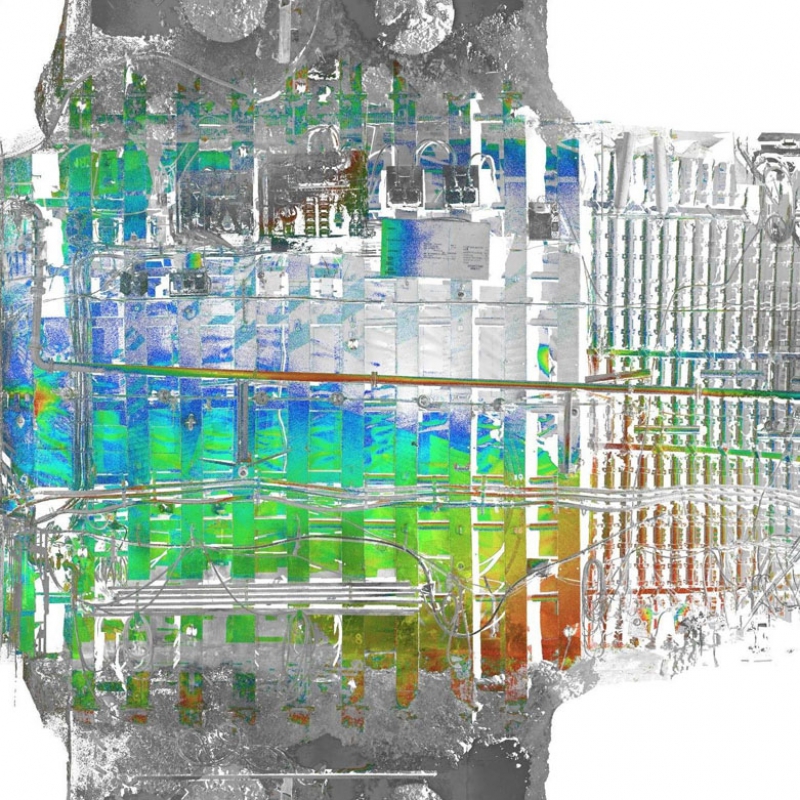Mining
Mining
Underground Mining
The provisions of Geological and Mining Law and secondary legislation require the correct operation of mining equipment to be inspected periodically. Special attention is paid to vertical transport and equipment used for such transport. It includes the winding gear, the headframe and the mine shaft together with its infrastructure (guides, buntons, shaft reinforcement). Each of the above-mentioned elements must meet rigorous performance criteria. We have experience in conducting comprehensive surveys of mine shafts, conveyance systems, and shaft stations.
Survey of a Shaft
Apart from their main function, i.e. to provide access to deposits, mine shafts also perform the transportation and ventilation functions. If they are shut off for too long time, it may have an adverse effect on ventilation in the workings and the supply of fresh air to the crew. Conventional measurements and surveys are very tedious and allow us to obtain only partial point-based information. This is associated with both technical restrictions (impeded access to a particular element) and movement restrictions (the need to take the shaft out of operation for a longer period of time, which is required in the case of conventional measurements, the impact of external factors on the unchanged location of an object during surveying, emergency situations that prevent a survey from being completed, etc.). This may result in a failure to identify emergency situations, while in the worst case scenario to loss of health or life by the workforce. It is necessary to use additional measurement methods. In such circumstances, an ideal solution is mobile laser scanning.
What does scanning guarantee?
- AUTOMATION Automation of measuring and diagnostic operations.
- MILLIMETER ACCURACIES Accuracies in the order of 1-3mm.
- NON-INVASIVENESS Remote measurements without stopping the operation of equipment.
- SPATIAL MEASUREMENT Surface inspection of the entire object being measured – millions of XYZ points measured.
- DEFORMATION MONITORING Verification of the condition of objects changing in time.
- REDUCED NUMBER OF PERSONNEL REQUIRED Fewer persons involved in measurements.
- SHORT MEASUREMENT TIME IN THE SHAFT Two days in the case of conventional methods and only up to one shift if mobile laser scanning is used.
- ECONOMIC BENEFITS Short shaft downtime.
Deformation Monitoring
By making periodic scans of a given object, it is possible to determine the level of deformation and wear and tear of the shafts, shaft stations, shaft equipment, hoist machinery and other. It allows us to determine the spatial distribution of deformations. The conventional methods do not provide such possibility. They are based on the determination of changes in control points, which gives a very general representation of an object. Laser scanning, on the other hand, provides a highly accurate spatial projection (up to millimeters), which allows us to perform any differential analysis and identify zones that are particularly prone to shape, location or deflection changes.
Visit our profile at Google+
Add us to favorites and keep to date with the last news














